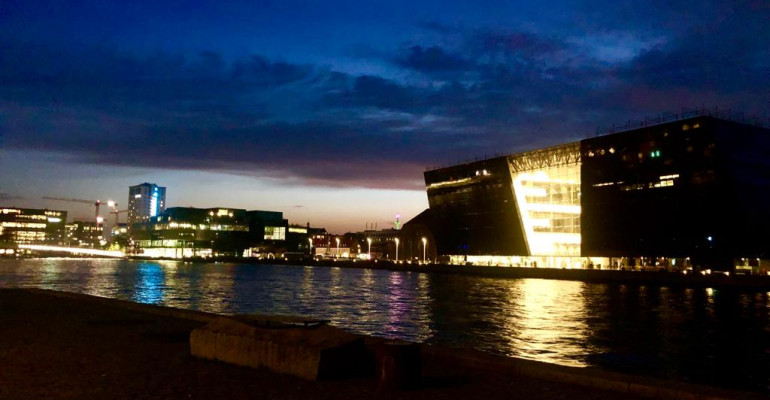
The city of reference for European design and architecture, the idea of seeing Copenhagen again on a short trip particularly intrigued me. Firstly because, although it is only one of the most beautiful and historically rich cities in Europa, it had managed more than the others to not only insert contemporary architecture harmoniously next to the monumental architecture of past centuries but also, especially in the areas around the port and in neighborhoods on the outskirts of the city, to reconvert very important or degraded spaces to daily life and the functions of a modern contemporary city. And not just the buildings but everything else too: urban planning, logistics and, consequently, social life. It is no coincidence that as regards environmental sustainability, Copenhagen is on track to become the first zero-emission city in the world by 2025.

The third reason is that a recent survey has shown that the Scandinavians, and especially the inhabitants of Copenhagen, top the list for happiness in the world. I couldn’t help but think that its dynamic architecture and its key players had contributed to such an excellent result.
In effect, that its livability is extremely high was a sensation that accompanied me every moment of my stay.

The whole city has developed its hospitality capacity intensely. From its gastronomy - innovative and diversified with a myriad of little eateries - to culture with many ongoing exhibitions and events and its hotel capacity which has seen many new structures built in and just outside of the city. Among these, we’d like to note Hotel Bella Sky, two lofty leaning glass and aluminum towers that play with the changing daylight and offer its hundreds of rooms a view of the park and the city in the distance.
The “black diamond”, that is, the Danish National Library, is a real jewel. An eight floor giant with a dark marble and smoked glass exterior, the inside adds the unforgettable experience of its interior subdivision of rooms and spaces containing over five million volumes.
Among the other public structures worthy of architectural note, there is the Opera House with its 1700 seats and perfect acoustics, the National Aquarium Denmark constructed like a giant desert sand dune with its “metallic skin” that changes color with the changing light of day, and lastly, the Danish Architecture Center, a futuristic structure entirely dedicated to spreading the culture of architecture, building, and urban development.
But in this plethora of architecture, which I will return to in the blog with details of things that stimulated my imagination and that are often present in my own projects, what gives an overall sense of beauty and harmony are the functional minimalist solutions. A sense of living and the aesthetics of city functions can be seen even in a residential center reconverted from an old warehouse or in the architectural and urban planning design of bike-paths that despite the humbleness of their function elicit interest and amazement. Copenhagen is a city that should be taken as an example by the other European cities for the good things it has done and is doing.
by Ilenia Girolami



